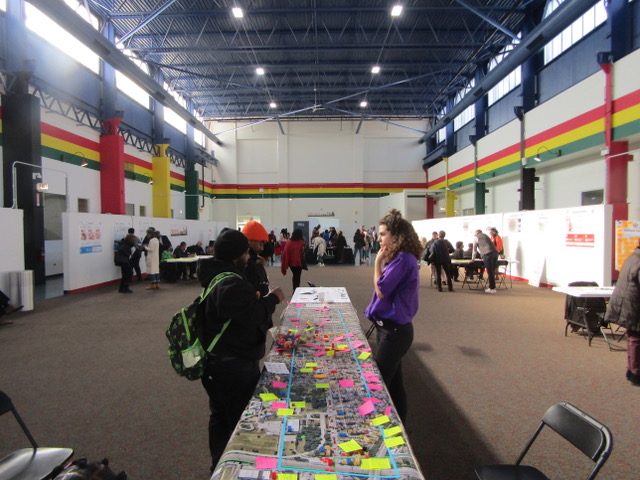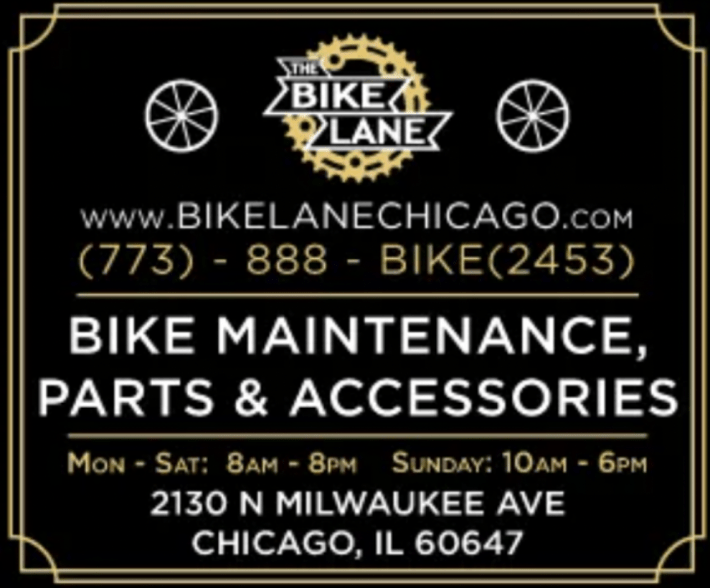
Chicago area transit agencies are working with the City of Chicago on several major transit projects at or near the 95th Street corridor. To make sure the project benefits these communities, which have suffered though decades of systemic disinvestment, the city is working with Far South Side community organizations and stakeholders.
The Chicago Department of Planning and Development and the CTA are working with consulting firm AECOM to draft an Equitable Transit Orientated Development Plan for the stretch of 95th Street between Cottage Grove Avenue and Halsted Street. As the name suggests, the goal is to make sure that all development along the corridor will respond to the needs of the community residents in a way that’s racially and economically equitable.
The 95th Street Corridor Plan comes as several major transit projects get underway. At the east end of the corridor, Metra is planning to upgrade the 95th Street/Chicago State University station, making it fully accessible to people with mobility issues, replacing the platform, and improving heating. On the west end, Pace is working on putting in Pulse Arterial Rapid Transit corridors along Halsted Street and 95th Street. And near the middle, CTA is gearing up for the long-awaited Red ‘L’ line extension past the 95th/Dan Ryan terminal, which would likely alter bus routes serving the Far South Side.
The planning process kicked off in November 2023 and the city held the first public meeting on February 3 at Endeleo Institute, near the east end of the study area. Throughout the meeting, officials in attendance emphasized that they were taking the community input seriously. Notably, they set up a “community table” made up of 28 area stakeholders, which will continue to keep an eye on corridor projects after the plan is finalized at the end of 2024 or early 2025. If development strays from the plan, the community table will use their clout to make sure things stay on track.
The Background
95th Street corridor has historically been one of the Far South Side’s major commercial and transportation corridors. The study area includes Roseland and some of Washington Heights portions of the corridor, community areas that saw disinvestment since the 1960s as the population shifted from majority-white to majority-Black.
Dr. Kirk Harris, who’s been consulting on the plan, said, “when you talk to a number of individuals who've been in the area for 50 or 60 years, they remember a community that was much more vibrant commercially.”
They had shops, they had places they could go to for services,” he said. “[These places] they no longer have. For example, there's not even a grocery store that could serve fresh fruits, vegetables, etc.”
According to DPD research, residents spend around $61 million outside the community, with most of that money going to retail. 52 percent of the residents have low access to food, defined as needing to travel more than half a mile to buy groceries.
The study area west of the Red Line is served by multiple CTA and Pace bus routes. East of the ‘L’, the number of bus routes drops to two – still more than most major streets. Metra Electric District Line trains stop at the 95th-Chicago State University station roughly every 30-40 minutes during rush hour and once an hour the rest of the time. The station is a flag stop, so the trains won’t stop there unless either a rider requests a stop or the conductor spots passengers on the platform. Once the renovations are complete, the station will become a regular stop.
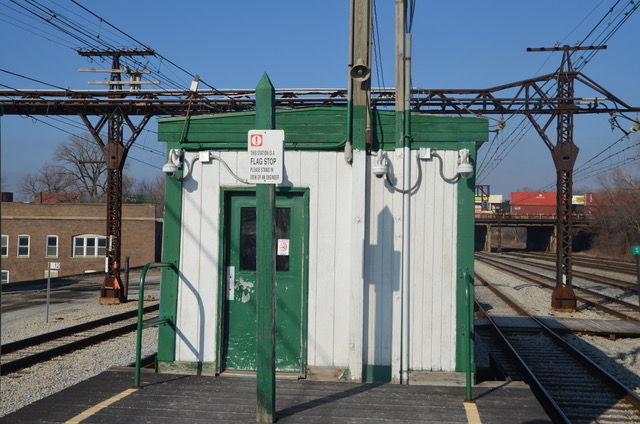
95th/Dan Ryan terminal is currently a major transit hub: Most CTA and Pace buses that serve the Far South Side stop there, as do some intercity buses. The Red Line extension may shift some of those buses further south, but CTA previously told Streetsblog that this is something that will be determined once the project is closer to actual construction.
According to data compiled by DPD, 64 percent of the residents living at or near the corridor drive and 21 percent use transit. The residents commute an average of 60-90 minutes to work, more than twice the citywide average of 30 minutes.
The study area has several things going for it: there is Woodson Regional Library at one end and the Chicago State University campus at the other end. Housing is affordable to 75 percent of the area’s population.
Somali Tandon, CTA’s Senior Manager for Strategic Planning, said that it was only natural for the agency to look beyond transportation improvements.
“For CTA, investment in transit is also an investment in the community,” she said. “This plan will help us bring that picture together.”
Community input
The February 3 meeting was held in open house format. DPD set up display boards sharing the findings, with residents using stickers to answer questions and give input on corridor development. A table was set with buckets and coins that residents could use to vote for what types of businesses they would like to see. A grocery store was an overwhelming favorite, with sit-down restaurants coming in second and healthcare providers coming in a close third.
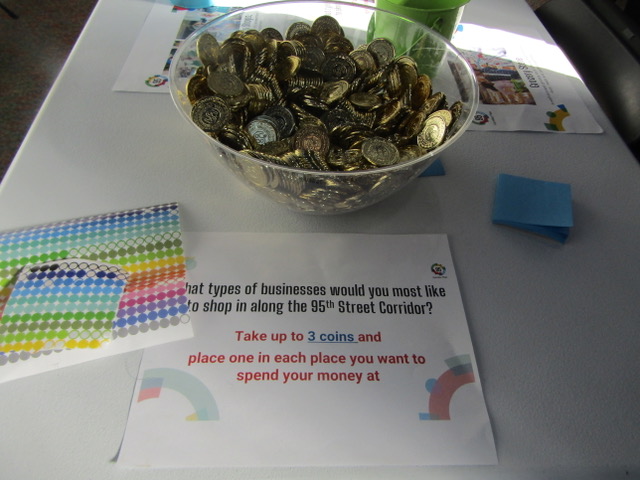
AECOM is working with the Far South Side Community Development Corporation and Endeleo Institute on community engagement, including getting the word out about public meetings. William Bouman, Far South Side CDC’s project program coordinator, said that there are several reasons they got involved. His employer is interested in "building up commercial corridors to be robust and to be mixed-use, and to be mixed income and having multiple options" in terms of what kind of businesses locate there. Ensuring that any development is racially equitable is another important concern.
Jasmine Gunn, a DPD city planner for the Far South Side, said that they wanted to see if what their data suggested aligns with residents’ lived experiences and, if not, adjust accordingly.
"It helps us be more specific in our strategies, because we [hear about] more specific issues from residents," she said.
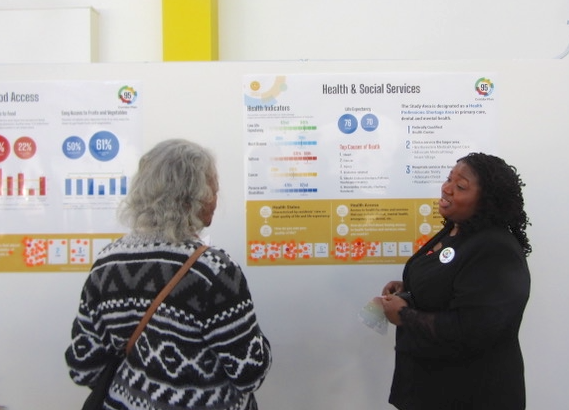
Gunn said DPD found many residents had low access to food because they had to drive to other neighborhoods to buy groceries. Another thing DPD reconsidered was affordability. The department initially looked at the cost of rental housing, but feedback from residents made them consider affordability in terms of mortgage payments and other bills homeowners pay.
“For this planning process, community feedback is really important,” Gunn said. “It would be front and center in our work.”
Several people involved in the study touted the community table. “It is a community convening body that will be evaluating all that is coming from the planning process associated with the corridor, looking at it, asking the questions and making sure that community input is intrinsically built in the ultimate decision-making, the priorities that are created,” Harris said. “This is not just about people involved now, this is about getting people involved in the long run.”
But all of this begs the question – what will happen if the city doesn’t listen to the community table?
“Those individuals at the community table have deep networks,” Harris said. “Those individuals can activate those networks. If you don’t [listen to us] our networks will respond, from writing letters to showing up at your office. Many people are leaders in their community and have that kind of influence to bring those stakeholders out and apply pressure.”
For the latest information on the project, including future meetings, click here.

Did you appreciate this post? Please consider making a tax-deductible donation to help Streetsblog Chicago keep publishing through 2025. Thank you.
